Vincent Van Gogh’s life has always been subject to intense speculation. The Dutch post-Impressionist painter had a tumultuous life (mainly owing to his frail mental health), yet managed to produce masterpieces which got world recognition post his death. David Bickerstaff’s documentary V_incent Van Gogh: A New Way of Seeing_ attempts yet another take to capture the life and works of the mercurial artist within a comprehensive timeline. Featuring Jamie de Courcey in the lead, the documentary looks at Gogh’s life, primarily through the prism of the detailed documentation at Van Gogh Museum in Amsterdam. [caption id=“attachment_4959991” align=“alignnone” width=“825”]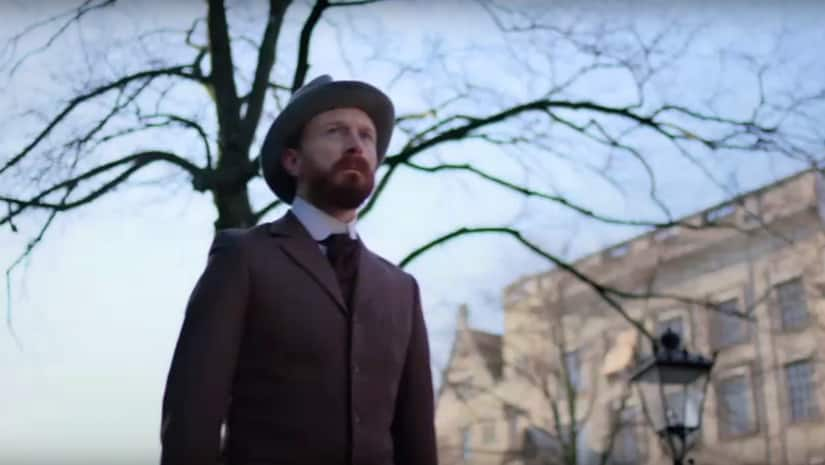 Jamie de Courcey as Vincent van Gogh. YouTube screengrab[/caption] Born in 1853 in Groot-Zundert, Netherlands, van Gogh’s life was heavily influenced by Protestant ideologies of selflessness and an impassioned will to work, keeping the concepts of ‘reward’ or ‘accolades’ at bay. The documentary is a compelling work to portray van Gogh in a continuum of artistic brilliance, rather than uphold his radical art as something ‘sudden’ and momentary. Heavily influenced by painters Rembrandt, Frans Hals, Charles Blanc, Francois Millet and the likes, van Gogh strives for an artistic ‘style’ of his own. Starting of as an art dealer in Goupil & Cie, van Gogh came in close proximity to the trends and works of modern artists and began understanding ‘art’. A shift to the company’s London headquarters within a few years left van Gogh disillusioned and morose. Dickens’ black and poor London, with its rampant poverty and corruption, caught the artist’s senses. He somehow converted his energies toward becoming a religious pastor. But he was heavily unpopular as most did not agree with his long-drawn, scripture-heavy sermons. [caption id=“attachment_4960081” align=“alignnone” width=“825”]
Jamie de Courcey as Vincent van Gogh. YouTube screengrab[/caption] Born in 1853 in Groot-Zundert, Netherlands, van Gogh’s life was heavily influenced by Protestant ideologies of selflessness and an impassioned will to work, keeping the concepts of ‘reward’ or ‘accolades’ at bay. The documentary is a compelling work to portray van Gogh in a continuum of artistic brilliance, rather than uphold his radical art as something ‘sudden’ and momentary. Heavily influenced by painters Rembrandt, Frans Hals, Charles Blanc, Francois Millet and the likes, van Gogh strives for an artistic ‘style’ of his own. Starting of as an art dealer in Goupil & Cie, van Gogh came in close proximity to the trends and works of modern artists and began understanding ‘art’. A shift to the company’s London headquarters within a few years left van Gogh disillusioned and morose. Dickens’ black and poor London, with its rampant poverty and corruption, caught the artist’s senses. He somehow converted his energies toward becoming a religious pastor. But he was heavily unpopular as most did not agree with his long-drawn, scripture-heavy sermons. [caption id=“attachment_4960081” align=“alignnone” width=“825”]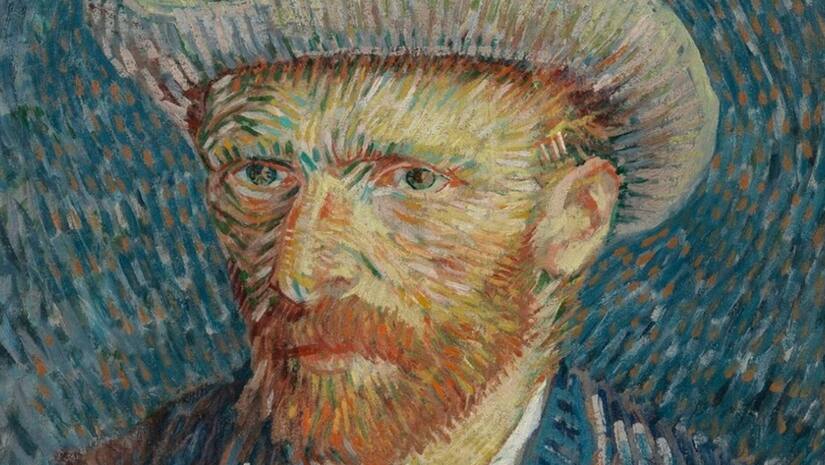 Van Gogh drew several self-portraits during his lifetime. This one is titled Self Portrait with Grey Felt Hat, 1887. Image from Facebook[/caption] But what this close association to the working classes did to the artist was capture peasants and farmers as subjects of his works which ultimately became Gogh’s signature style. Till date, Gogh is often referred to a peasant artist. Heavily influenced by impressionism and pointillism, Gogh’s unabashed brush strokes captured portraits of farmer children, men and women. Daubigny and Jules Dupre’s works led Gogh through his works in peasant paintings. In one of Gogh’s letters to younger brother Theo, Vincent said that if a certain painting ‘smells’ like bacon of if the field in the art-work ‘smelt’ like manure, it was a healthy sign. Peasant paintings should not become too ‘perfumed’, believed Vincent. The models in his paintings became stark, unapologetic images of the trying life of these farmers. “They were neither happy, nor sad…just tired. His extensive work on farmers’ lives made Gogh a portrait artist with a keen eye to context and detail, as he is considered now,” says Maite van Dijk, curator in the Van Gogh Museum. [caption id=“attachment_4960031” align=“alignnone” width=“825”]
Van Gogh drew several self-portraits during his lifetime. This one is titled Self Portrait with Grey Felt Hat, 1887. Image from Facebook[/caption] But what this close association to the working classes did to the artist was capture peasants and farmers as subjects of his works which ultimately became Gogh’s signature style. Till date, Gogh is often referred to a peasant artist. Heavily influenced by impressionism and pointillism, Gogh’s unabashed brush strokes captured portraits of farmer children, men and women. Daubigny and Jules Dupre’s works led Gogh through his works in peasant paintings. In one of Gogh’s letters to younger brother Theo, Vincent said that if a certain painting ‘smells’ like bacon of if the field in the art-work ‘smelt’ like manure, it was a healthy sign. Peasant paintings should not become too ‘perfumed’, believed Vincent. The models in his paintings became stark, unapologetic images of the trying life of these farmers. “They were neither happy, nor sad…just tired. His extensive work on farmers’ lives made Gogh a portrait artist with a keen eye to context and detail, as he is considered now,” says Maite van Dijk, curator in the Van Gogh Museum. [caption id=“attachment_4960031” align=“alignnone” width=“825”]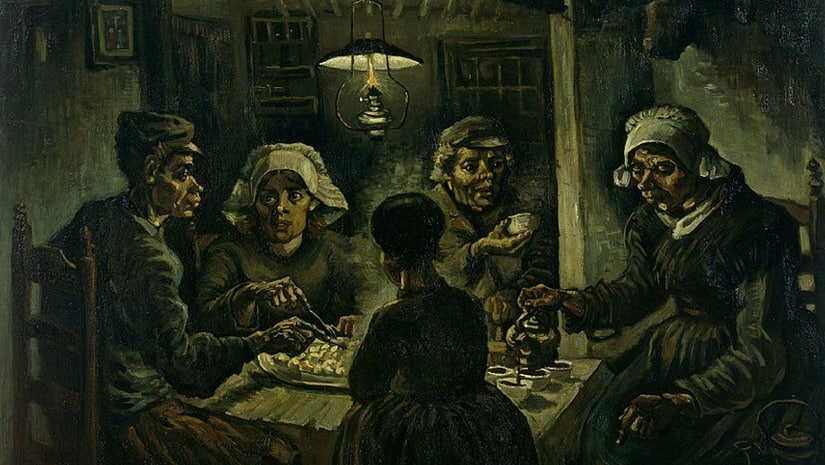 The Potato Eaters, 1885. Image from Facebook[/caption] This is the time that Gogh had returned to his village in Nuenen in 1883. During his two-year stay, Gogh completed nearly 200 paintings which consisted mostly of somber earth tones of dark brown, and had no sign of the vivid colours that became Gogh’s signature style later. In 1885, Gogh came up with The Potato Eaters which is still considered one of the most remarkably detailed works in perspective and light-and-dark imagery. The painting was, at the time, criticised heavily by fellow painter Anthon van Rappard and Theo. Gogh’s next tryst with Paris in 1887, was one of his more prolific artistic ventures where he closely worked on the vibrant culture of Montmartre. Using a heavy impressionist hand, his style became vivid and colourful with stark contrasting colours. He even worked with Henri de Toulouse-Lautrec on the working women of Paris. The burlesque bars and bohemian theatres bubbling with prostitutes was captured in Gogh’s paintings. Garden with Courting Couples, ’87; Self Portrait, ’87; Glass with Yellow Roses, ’86 depicted such vivid colour palettes. Japanese woodblock prints also influenced Gogh during the time and he almost imitated them on canvas, like in Flowering Plum Orchard, ’87. [caption id=“attachment_4960101” align=“alignnone” width=“825”]
The Potato Eaters, 1885. Image from Facebook[/caption] This is the time that Gogh had returned to his village in Nuenen in 1883. During his two-year stay, Gogh completed nearly 200 paintings which consisted mostly of somber earth tones of dark brown, and had no sign of the vivid colours that became Gogh’s signature style later. In 1885, Gogh came up with The Potato Eaters which is still considered one of the most remarkably detailed works in perspective and light-and-dark imagery. The painting was, at the time, criticised heavily by fellow painter Anthon van Rappard and Theo. Gogh’s next tryst with Paris in 1887, was one of his more prolific artistic ventures where he closely worked on the vibrant culture of Montmartre. Using a heavy impressionist hand, his style became vivid and colourful with stark contrasting colours. He even worked with Henri de Toulouse-Lautrec on the working women of Paris. The burlesque bars and bohemian theatres bubbling with prostitutes was captured in Gogh’s paintings. Garden with Courting Couples, ’87; Self Portrait, ’87; Glass with Yellow Roses, ’86 depicted such vivid colour palettes. Japanese woodblock prints also influenced Gogh during the time and he almost imitated them on canvas, like in Flowering Plum Orchard, ’87. [caption id=“attachment_4960101” align=“alignnone” width=“825”]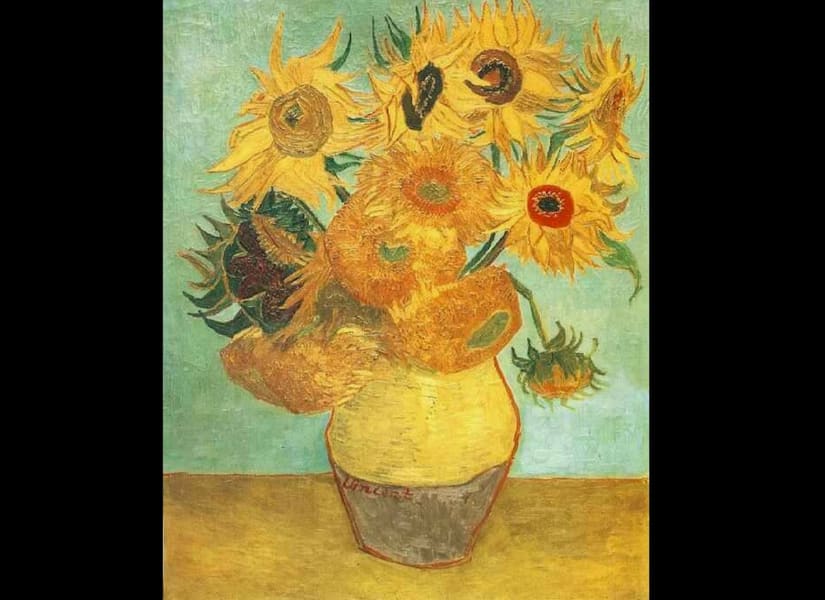 Vincent van Gogh’s still life image of the sunflowers remains his most celebrated works till date. Image from Facebook[/caption] The next phase of Gogh’s shift to the countryside of Arles brought about his most productive phases as an artist. The warm countryside with its bright colours moved Gogh. The Pink Orchard, ’88; Wheatfield, ’88 and The Yellow House (the street),’88 were all showed an intense imagery. Gogh portrayed unhindered brushwork in his paintings during the time, making one his most iconic ‘Still Life: Vase with Twelve Sunflowers’ in 1888 and Bedroom in Arles,’88. [caption id=“attachment_4960241” align=“alignnone” width=“825”]
Vincent van Gogh’s still life image of the sunflowers remains his most celebrated works till date. Image from Facebook[/caption] The next phase of Gogh’s shift to the countryside of Arles brought about his most productive phases as an artist. The warm countryside with its bright colours moved Gogh. The Pink Orchard, ’88; Wheatfield, ’88 and The Yellow House (the street),’88 were all showed an intense imagery. Gogh portrayed unhindered brushwork in his paintings during the time, making one his most iconic ‘Still Life: Vase with Twelve Sunflowers’ in 1888 and Bedroom in Arles,’88. [caption id=“attachment_4960241” align=“alignnone” width=“825”]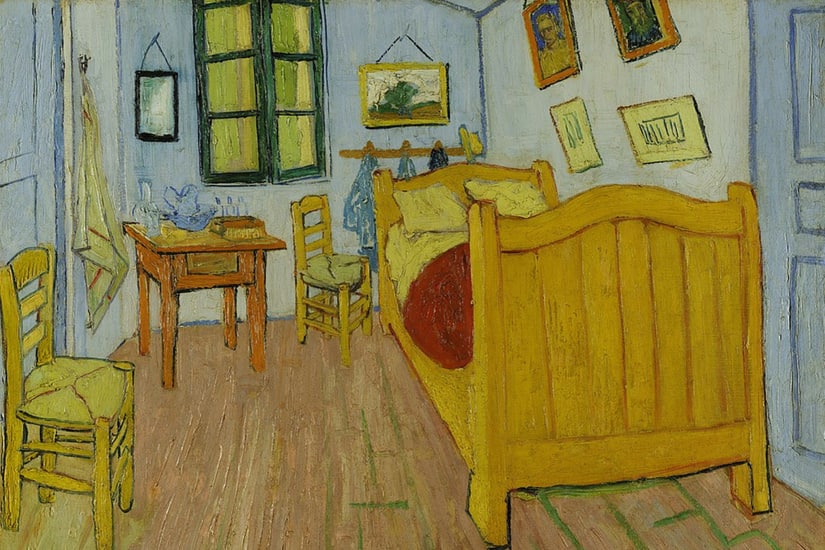 Bedroom in Arles, 1888, a reflection of Van Gogh’s actual bedroom, was something Gogh painted before Gauguin arrived at his house. Image from Facebook[/caption] It was at this time that contemporary artist Paul Gaugin visited Gogh’s apartment for two months in which both of them would often paint the same subject on various canvases to test the reaction of colours on them. The stay ended with an unfortunate argument which resulted in Gauguin’s departure and Gogh’s act of cutting a portion of his ear with a razor. [caption id=“attachment_4960131” align=“alignnone” width=“825”]
Bedroom in Arles, 1888, a reflection of Van Gogh’s actual bedroom, was something Gogh painted before Gauguin arrived at his house. Image from Facebook[/caption] It was at this time that contemporary artist Paul Gaugin visited Gogh’s apartment for two months in which both of them would often paint the same subject on various canvases to test the reaction of colours on them. The stay ended with an unfortunate argument which resulted in Gauguin’s departure and Gogh’s act of cutting a portion of his ear with a razor. [caption id=“attachment_4960131” align=“alignnone” width=“825”]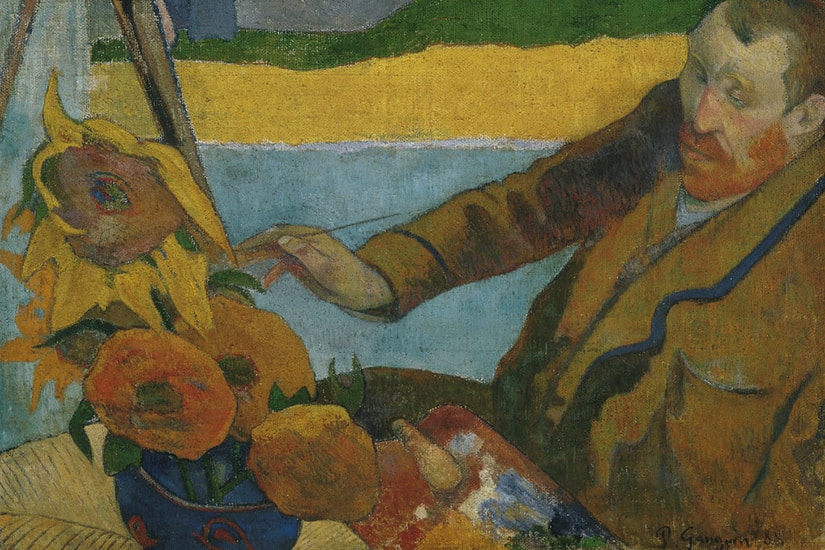 Paul Gauguin painted Van Gogh while the latter was creating his masterpiece. Image from Facebook[/caption] Marking a descent in Gogh’s mental health, the incident alarmed the artist and he admitted himself in the psychiatric facility in Saint-Remy. The artist’s stay there produced the much-talked about work of The Starry Night, ’89. [caption id=“attachment_4960141” align=“alignnone” width=“825”]
Paul Gauguin painted Van Gogh while the latter was creating his masterpiece. Image from Facebook[/caption] Marking a descent in Gogh’s mental health, the incident alarmed the artist and he admitted himself in the psychiatric facility in Saint-Remy. The artist’s stay there produced the much-talked about work of The Starry Night, ’89. [caption id=“attachment_4960141” align=“alignnone” width=“825”]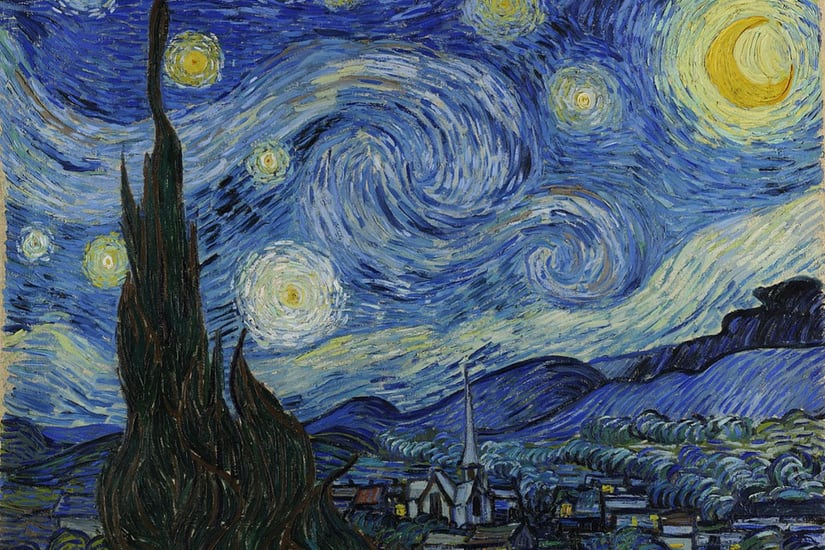 Van Gogh’s Starry Night was a milestone in impressionism for its bold brushwork. Image from Facebook[/caption] Gogh’s final phase was also steeped with works on paintings and an almost obsessed dedication towards art. Tree Roots, 1890 was his last painting in the morning of 27 July when he disappeared and returned only late in the evening, having shot himself in the chest. Two days later, he passed away in the presence of his brother, Theo. [caption id=“attachment_4960281” align=“alignnone” width=“825”]
Van Gogh’s Starry Night was a milestone in impressionism for its bold brushwork. Image from Facebook[/caption] Gogh’s final phase was also steeped with works on paintings and an almost obsessed dedication towards art. Tree Roots, 1890 was his last painting in the morning of 27 July when he disappeared and returned only late in the evening, having shot himself in the chest. Two days later, he passed away in the presence of his brother, Theo. [caption id=“attachment_4960281” align=“alignnone” width=“825”]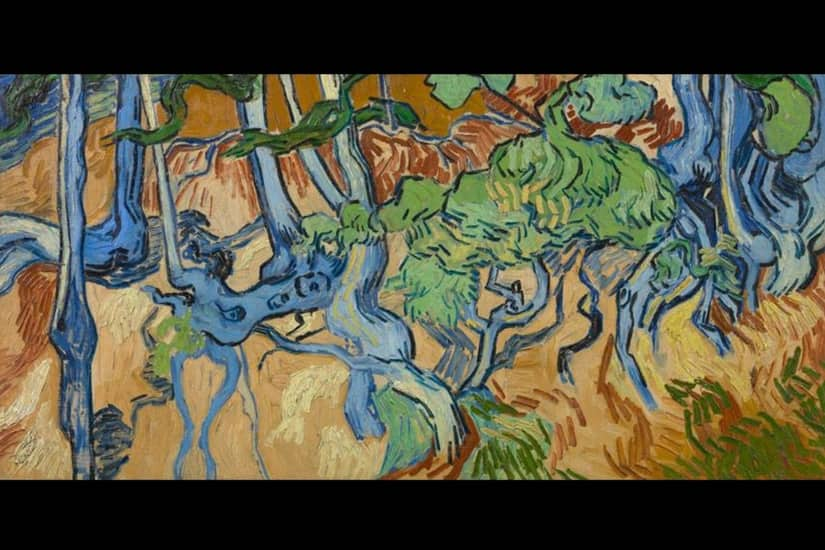 Tree Roots, 1890. This was Van Gogh’s last painting few hours before he shot himself. Image from Facebook[/caption] The documentary succeeds in depicting the fact that Gogh, having created almost 2100 works which included 820 oil paintings and more than 1300 watercolours, had a drive towards art that was uncompromising, and often a punishing practice. The narrative manages to chart the artist’s journey through his travels on road and consequently through his mind, a faculty in Gogh, which many have tried to decode. The numerous letters he wrote to Theo and various contemporary artists served as the crux material for the film, showing the troubled times of the penurious genius. The film ends with one of Gogh’s quotes, giving audiences a sharp insight into his tired thoughts, especially when he says, “Art is long and life is short. And we must wait patiently to sell our skins dearly."
Tree Roots, 1890. This was Van Gogh’s last painting few hours before he shot himself. Image from Facebook[/caption] The documentary succeeds in depicting the fact that Gogh, having created almost 2100 works which included 820 oil paintings and more than 1300 watercolours, had a drive towards art that was uncompromising, and often a punishing practice. The narrative manages to chart the artist’s journey through his travels on road and consequently through his mind, a faculty in Gogh, which many have tried to decode. The numerous letters he wrote to Theo and various contemporary artists served as the crux material for the film, showing the troubled times of the penurious genius. The film ends with one of Gogh’s quotes, giving audiences a sharp insight into his tired thoughts, especially when he says, “Art is long and life is short. And we must wait patiently to sell our skins dearly."
A Theory of Communications enthusiast still learning social skills. Forever curious about the effects of good food on grumpy people.
)